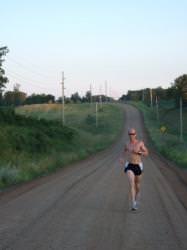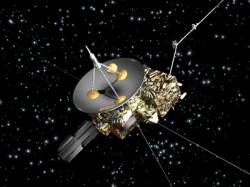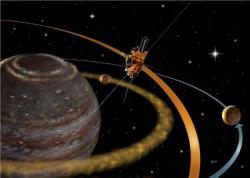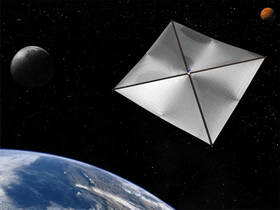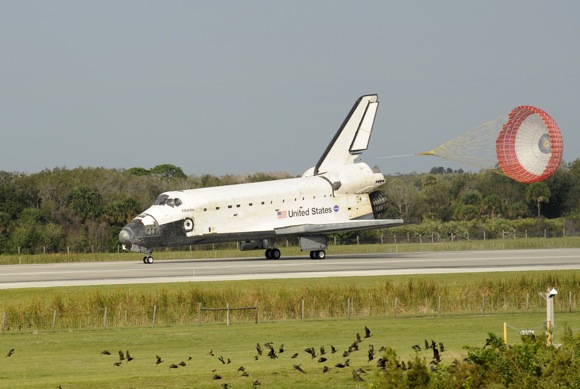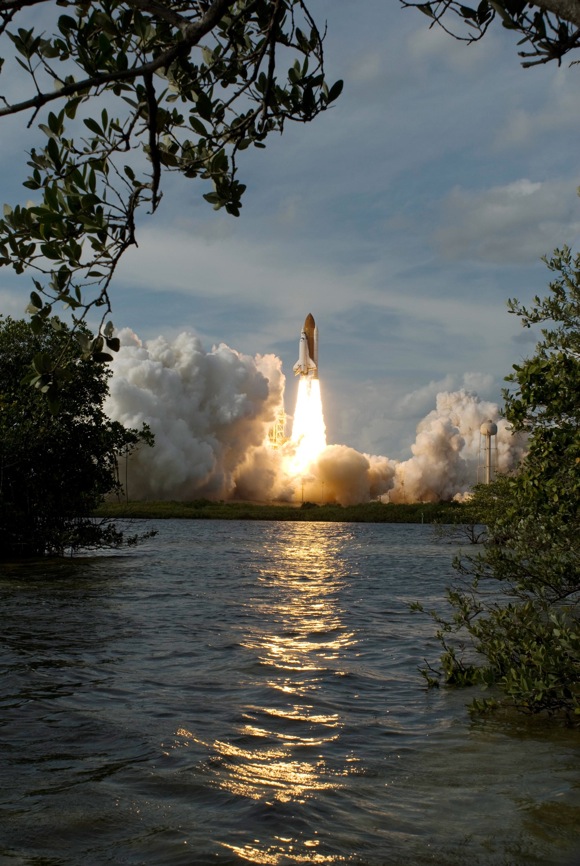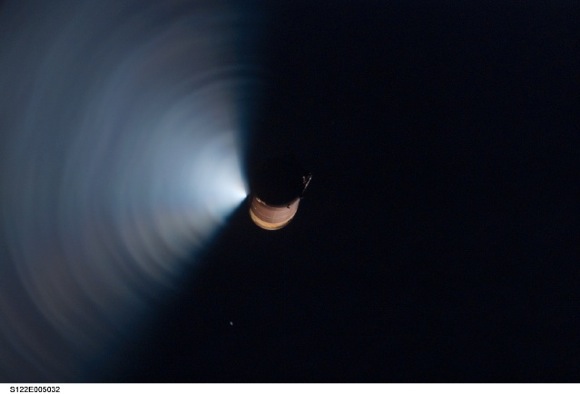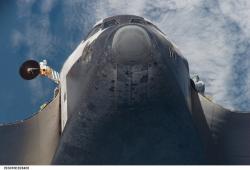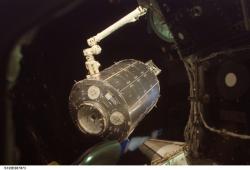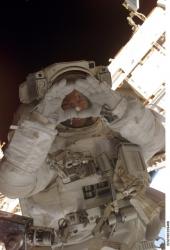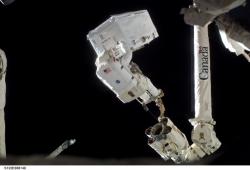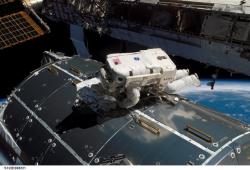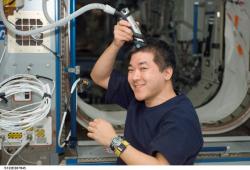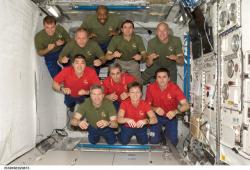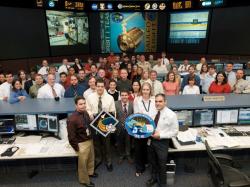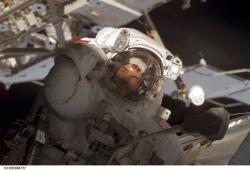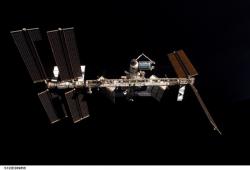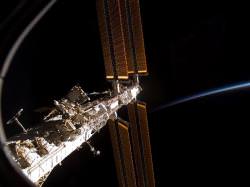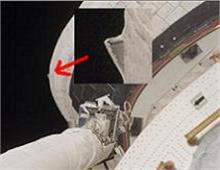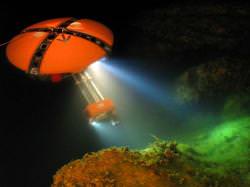It’s been called a white elephant, an orbital turkey, a money pit, and an expensive erector set. Seemingly, there’s even people at NASA who think building it was a mistake. The International Space Station has been plagued with repeated delays, cost overruns, and bad press. Additionally, the ISS has never really caught the fancy of the general public and most likely there’s a fair percentage of the world’s population who have absolutely no idea there’s a construction project the size of two football fields going on in orbit over their heads.
But I’m going to be honest. I’ll come right out and say it: I really like the ISS. In fact, I’m crazy about it, and have been ever since Unity docked with Zarya back in 1998. Yes, my heart belongs to the space station, and since its Valentine’s Day, I’m going to profess my feelings here and now with ten reasons why I love the International Space Station:
(In no particular order:)
1. International Cooperation. Didn’t your heart swell with pride for the Europeans when the Columbus science module finally became part of the station this week? And you gotta love the Canadians for their reliable, heavy-duty Canadarm 2. The Russians have been steady partners in station construction and re-supply for years now. Japan’s science lab will be added on the next shuttle mission.
The ISS is the largest, most complex, international engineering project in history. In a world where violence and political animosity floods the daily news, it’s incredible that this structure is quietly being built by 16 different countries working together in relative harmony. If not for the international partners, the ISS probably wouldn’t have gotten off the ground. NASA Administrator Mike Griffin has said that the station’s most enduring legacy is the international partnership that created it.
2. Actually Building an Outpost in Space. The dream of almost every post-Apollo space enthusiast is to have a settlement or colony in space. As humble as it is, the ISS is exactly that. Humans have been living on board the station for over 7 years now. The experience of constructing and living aboard this complex structure in space is invaluable, and any future outpost will benefit from what’s been learned with the ISS.
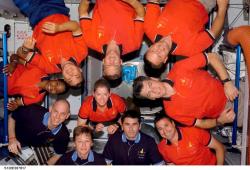
3. The Personalities. Peggy Whitson, the first female station commander. Clay Anderson’s unique sense of humor. Suni Williams’ marathon and haircut for cancer patients. Mike Lopez-Alegria’s music. Mikhail Tyurin’s golf shot. Yuri Malenchenko’s wedding. Frank Culbertson’s September 11 perspective. Yury Usachev’s spinning antics. It goes all the way back to the three-way fist pump on Expedition One between Bill Shepherd, Sergei Krikalev, and Yuri Gidzenko. With the Expeditions lasting 4-8 months, we have the opportunity to get to know the astronauts and cosmonauts that live and work on board the ISS. If you watch the daily feeds from the ISS or listen to the periodic press conferences, you can become familiar with the different personalities of the station crews. The number one personality has to be Don Petit and his Saturday Morning Science.
4. You can see it almost every night. I’ve witnessed jaws dropping and eyes widening in wonder when people see the ISS for the first time gliding silently and swiftly across the night or early morning sky. I never tire of observing it. Find out when the station will fly over your backyard at NASA’s website or at the Heaven’s Above website.
5. No major problems so far. One of the real impressive things about the ISS is that all the components, built by different countries and contractors have fit together perfectly. Yes, there have been intermittent computer issues, a faulty smoke alarm and the torn solar arrays. But these problems have all been resolved in short order. The damaged SARJ (Solar Alpha Rotary Joint) is a looming issue that could be problematic. But there are some first-rate engineering minds working on this matter, and it appears they have time to come up with a solution. The station has never had a major calamity or had to be evacuated in over 7 years of continuous human occupation. Knock on a Whipple Shield.
6. The general public can participate. Schools and informal education centers can conduct live question and answer sessions with space station crews. Middle school students can choose locations on Earth for the ISS crew to take pictures as part of the EarthKAM project. Ham radio operators can talk regularly with astronauts and cosmonauts with the ARISS (Amateur Radio on the ISS.) College students can design projects to be researched on board the station. And of course if you have $40 million in spare change you can ride to the ISS on a Soyuz as a spaceflight participant.
7. Finally, we have science officers. The other dream of every post-Apollo space enthusiast (and Star Trek fans) is to have science officers to conduct real scientific research. The ISS has had science officers since 2002, but science hasn’t been in the forefront of the work on board the ISS. Yet.
8. Long term research. The ability of the ISS to serve as a platform for science has come under fire. But what other lab has been expected to produce scientific results while still under construction? With the addition of the European and Japanese science labs, and the expected increase in crew size from three to six in 2009, scientific research, the original purpose of the station, will finally be able to be conducted with consistency. The microgravity environment of the ISS allows the study of long-term effects of weightlessness on the human body, crucial for any future human exploration on the moon and Mars. Research will help fight diseases such as diabetes, cancer, osteoporosis, and AIDS. The station provides a unique place to test technologies such as life support systems and new manufacturing processes, and gives us a long-term platform to observe and understand Earth’s environment and the universe.
9. Post docking fly-arounds. After each construction mission to the ISS, the shuttle’s post docking fly-around gives us a chance to see the new additions and latest configuration of the station. The astronauts say it’s a thrill to see how their handiwork on a specific mission fits into the big picture of the entire ISS, and it’s a thrill for us back on Earth to see the station’s new look, too. Plus the fly-around usually gives the shuttle pilot some actual stick time to fly the shuttle and a little time in the limelight.
10. What else would we be doing? Some people feel that the ISS’s tremendous budget has taken funds away from robotic exploration and other science. I can’t argue with that. But when it comes to human spaceflight, what else would we have been doing for the past 10-20 years? A space station was the logical next step after the shuttle. The main problem is that it took so long to decide on a plan, get it approved by Congress and get it in the works with international cooperation. But now, with construction and maintenance ongoing, we’re constantly and continually learning how to live and work in space. The ISS is a resource that will guide us on our future human endeavors in space. It’s more than just an obligation to finish and then be disregarded. The planning and funding for its future should encompass the maximum utilization of its fullest potential.
In my eyes, the International Space Station is a thing of beauty, a work of art, an engineering marvel, and a constant companion that I watch for every night as it orbits our planet. The ISS should be given all the respect — and love — it deserves.

